D2 Electric and Magnetic Fields
1/23
Earn XP
Description and Tags
Electro + Magnetic
Name | Mastery | Learn | Test | Matching | Spaced |
|---|
No study sessions yet.
24 Terms
D2.1 Electric charge
Charge is property of matter, responsible for electric force.
Unit: Coulomb (C): charge carried by electric current of 1A in 1s
Symbol: q
Quantisation: matter is made of atoms, which are made of:
1. Electrons: -1 charge
2. Protons: +1 charge
3. Neutrons: neutral (0 charge)
Most everyday object have charge = 0; protons/electron have magnitude of charge = elementary charge = e = 1.60 ×10-19C
Object becomes charged if there is an excess of protons or neutrons; always exactly +1 or -1 e so quantised.
D2.2 Electric Forces
When 2 charges are close tg. They exert a force on each other:
Attractive: closer tg. : unlike charges: opposites attract
Repulsive: further ap. : like charges
D2.3 Conservation of charge
Charge is conserved: total charge in isolated system in constant
charge can be transferred, but not created nor destroyed.
REMEMBER THIS IN NUCLEAR DECAY!!
D2.4 Millikan’s Oil Drop
Determined value of elementary charge.
Oil used instead of water so no evap, no Δm.
Oil drops sprayed out into chamber and charged by friction by falling; some drops lose e- and become + charged, and vice versa. The drops passes 2 metal plates and is viewed under microscope.
Usually, the drop falls under gravity, reaching terminal velocity (air resist.) However, with the inclusion of electric field; potential diff is applied between metal plates → electric field. Charged drops rise when field is strong enough. Felectric> Fg
F = Eq (F=electrostatic F on charge NC-1) (E=electric field strength;N)(q=charge; C).
Found e = 1.6 × 10-19 C
C2.5 Charge transfer by friction
Friction: when 2 insulators (no free e-) are rubbed tg. One +change, one - : rod+cloth; e- rod→ cloth. Discharged when in contact with another insulator
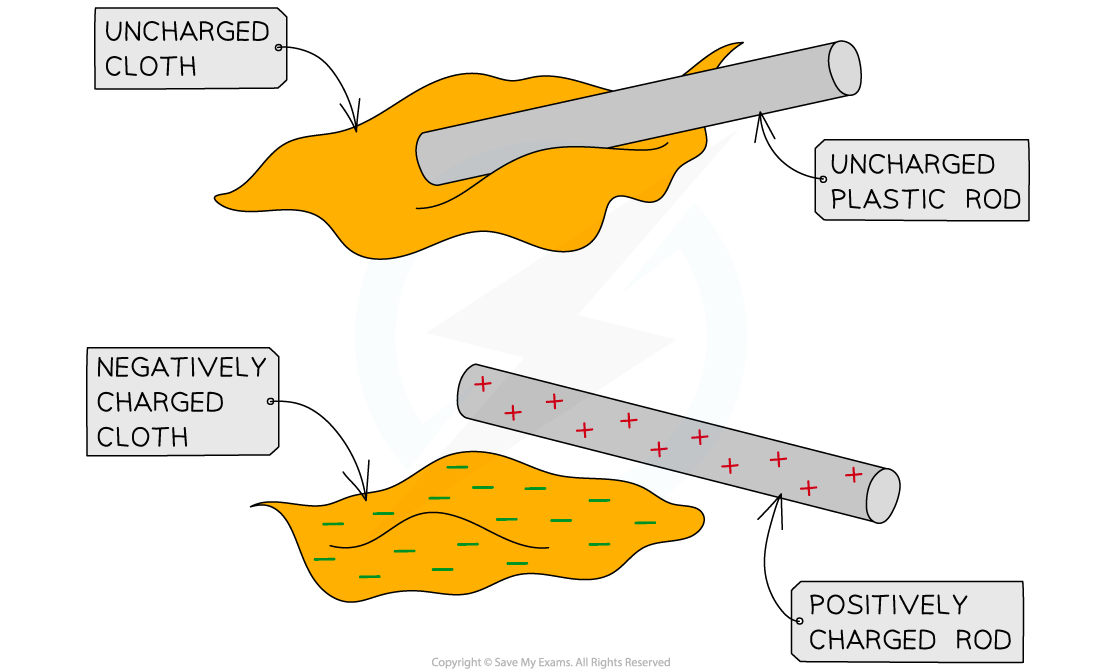
C2.6 Electrostatic induction
Seperation of charge; put uncharged object close to charged one;
Eg. Balloon next to negatively charged rod: electron move to opposite end. When then grounding, electrons leave and balloon is left with + charge on it, even when removing the rod.
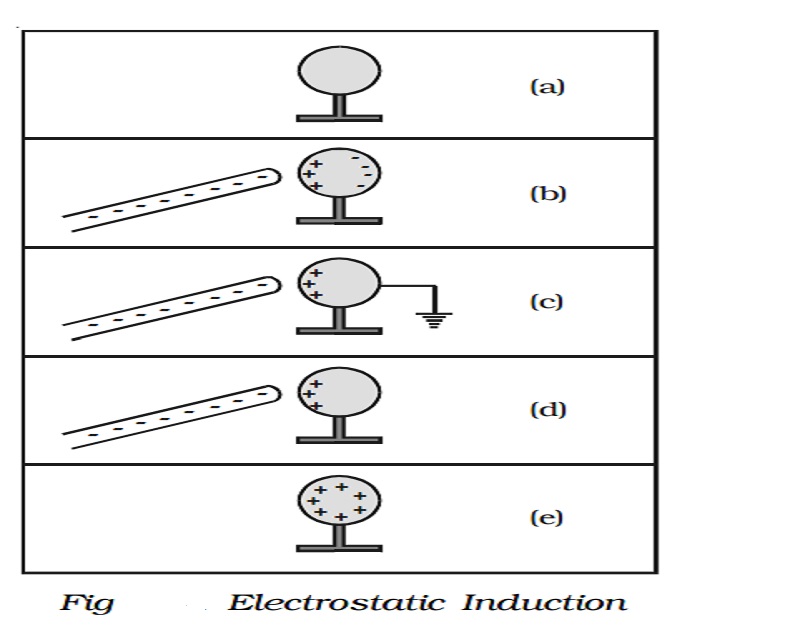
C2.7 Charge by contact
From charged insulator to earther conducto: large potential diff.
C2.8 Insulator conductor
Conductor: freeflowing e-: metals + graphite
Insulator: plastic, glass, dry wood.
C2.9 Dangers of static electricity
When potential diff between 2 object become VERY large; E field strong enough to intract w air causing current in air →spark
Electrocution: lightning
D2.10 Coulomb’s Law
All q’s generate an electric field → F on nearby q’s.
Electric F between 2 point charges ∝ q1q2 (charge) and 1/r2 (sep)
F = kq1q2/r2 (k = 8.99 ×109) (q in C!!!) -
k = 1/4πε0
ε0 = Permittivity of free space = 8.85 × 10–12 (measure of resistance offered by material in creating an electric field in it)
D2.11 Repulsive/Attractive F
Can be either attractive or repulsive: depends on q’s
both +, or both -: +Force → repulsive
one + one -: - Force → repulsive
D2.12 Electric Field Strength
Force per unit charge experienced by small + test charge placed at that point.
E = F/q = kq/r2
+q: experience force Eq in direction of field
-q: experiences force Eq in opposite direction
Away from + charge, Towards - charge
Charged sphere acts as point charge, w same charge as sphere at centre, within sphere, E = 0 untiil surface, then start decreasing as a 1/x graph.
Can add them up like vectors (keep direction in mind).
Resultant field depends on type and magnitude of charges
D2.13 Electric Field between Parallel Plates
E = V/d (d=sep between plates)(V = potential diff between plat)
Greater V → stronger F, Greater d → weaker F
NOT FOR POINT CHARGES!!!! Radial vs parralel fields.
Field goes from + plate (+ terminal) to the - plate (- terminal)
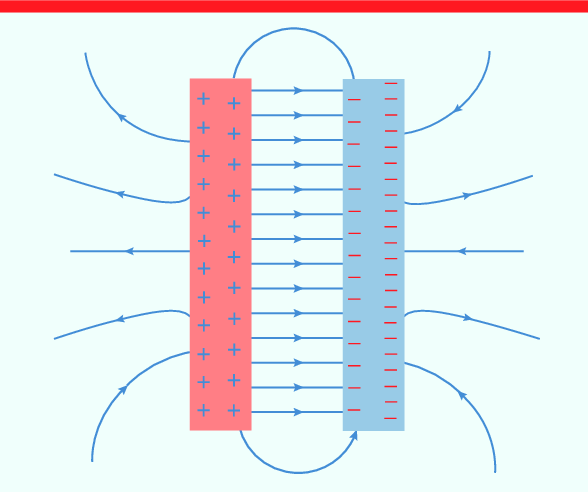
D2.14 Electric field lines
Direction + magnitude of field experienced by + test charge:
ALWAYS directed from + charge to - charge (experienced by the + charge)
+ charge: away
- charge: towards
Strength of field is strongest: lines closest tg, weakest: furthest…
D2.15 E - field between 2 point charges
2 opposite: from + to -
2 same: repelling, either to (-), or from (+) - neutral in middle
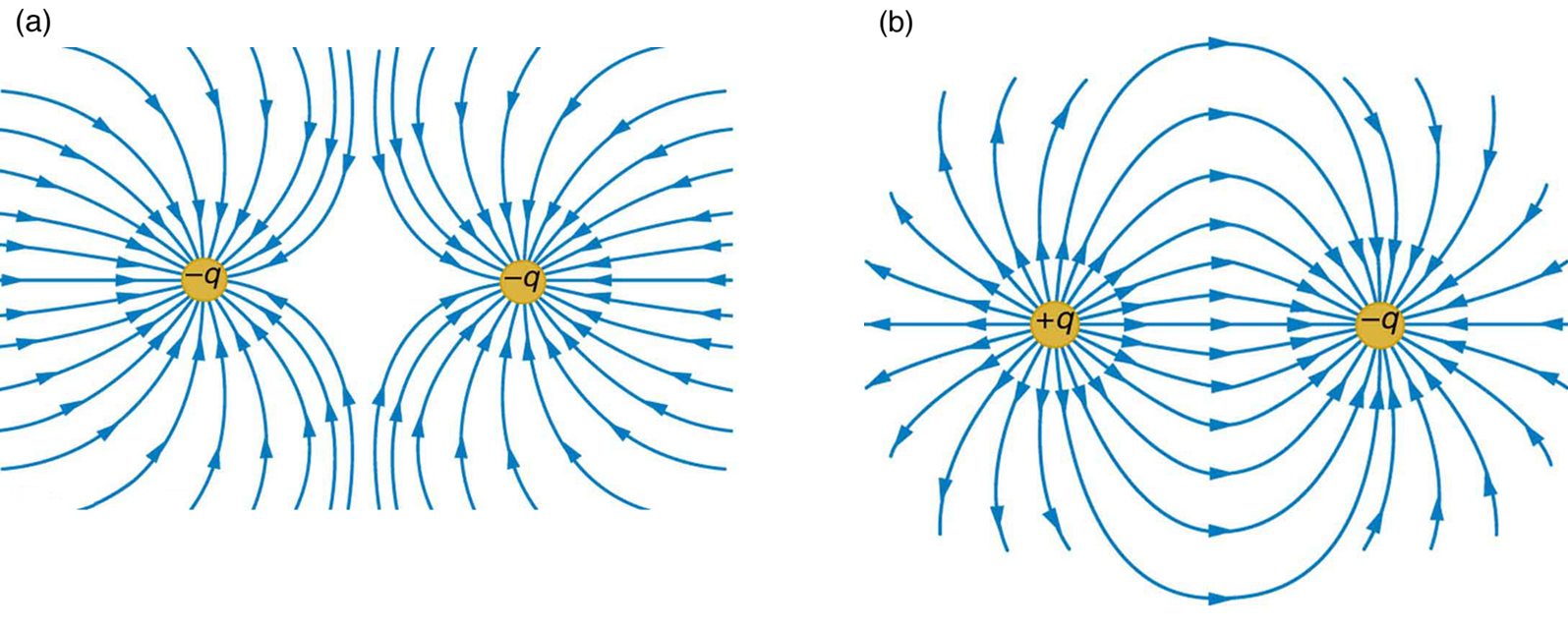
D2.16 Electric Potential
Wok done per unit charge in taking + test charge from ∞ → point
J C-1 = V. At infinity → 0
Around a + charge: + value, requires work to get here, V decreases (to 0) with moving further away
Around a - charge: - value, requires work to move away, V increase (to 0) with moving further away.
Ve = kQ/r (Q of charge producing potential.
Inside charged sphere, V = constant (not 0)
V = kQ1/r1 + kQ2/r2
D2.17 Electric Potential Energy
Work done in bringing all charge in system to position from ∞.
like charges: repulsive F; +Ep : energy released in seperating
opposite charges: attractive F: -Ep : energy supplied to seperate
Ep = k(q1q2)/r = change in Ep = W= FΔr (area under Fr graph)
ΔEp = kq1q2 (1/r1 - 1/r2)
D2.18 Graphs…
E - r graph: area = V
F - r graph: area = E
D2.19 Equipotential surfaces (electric)
Equipotential: equal electric potential; perp to electric field lines
Along surface; no Work done.
Dipole: ++/ --: rondjes, +-: lines outwardish. Closer to charge = larger field.
Uniform field: parallel lines
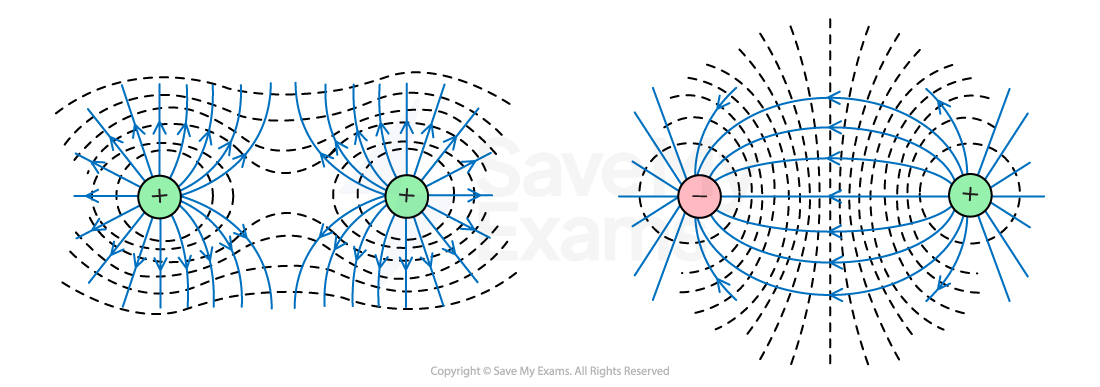
D2.20 Magnetic Fields
Region of space in which magnetic pole experiences force
by moving electric charge
permanent magnets
magnetic field = B-field. Stat-charge doesnt produce field. Around current carrying wire. Invisible, but see effect pulling magnetic materials.
D2.21 Magnetic Flux Density
Magnetic Flux Density: B: nr of magnetic field lines passing through region of space per unit area: Teslas (T) (force N on 1m wire carrying 1A at right angle to field)
higher B: stronger field: field lines closest
Direction + magnitude to represent them: N → S pole. Close tg at poles.
Around bar magnet, into/to South, out of/from North. nevr cross
D2.22 Magnetic field between 2 bar
2 like poles: repel, 2 opp: attract
D2.23 Right Hand Rule
Magnetic field around current carrying wire.
Thumb = current, Fingers = field
N = outward = puntje = anticlock
S = inward = cross = clock
D2.24 Magnetic vs Electro
M: moving q’s, closed loops,
E: stationa q’s, start + end -,